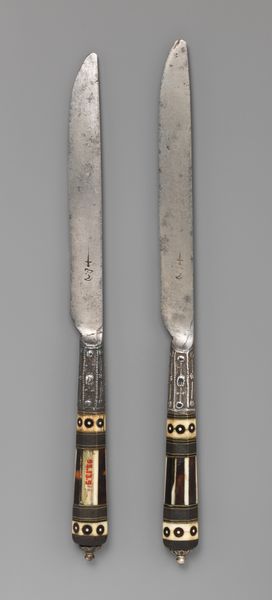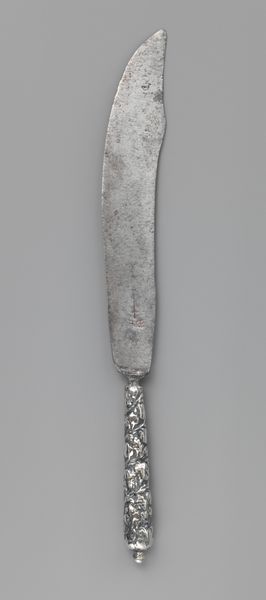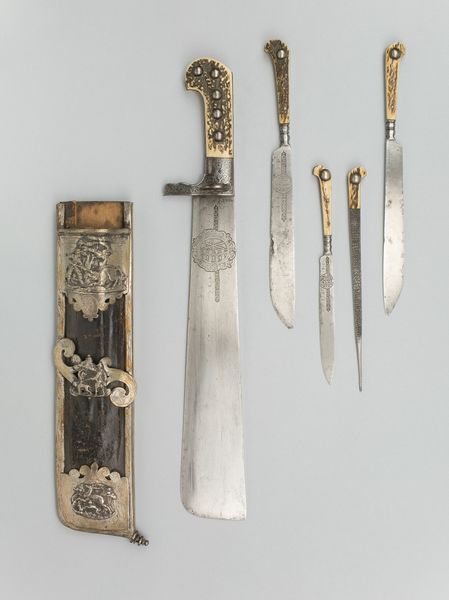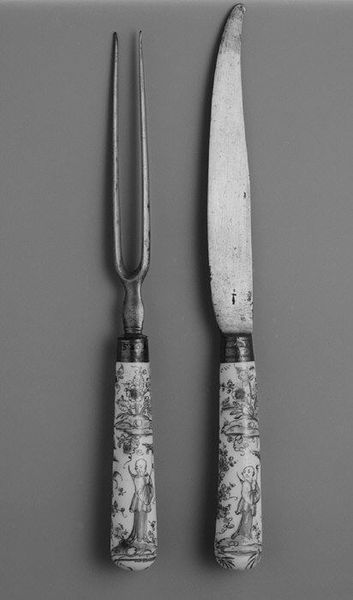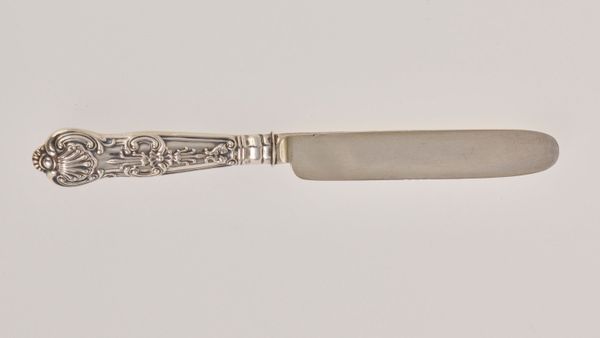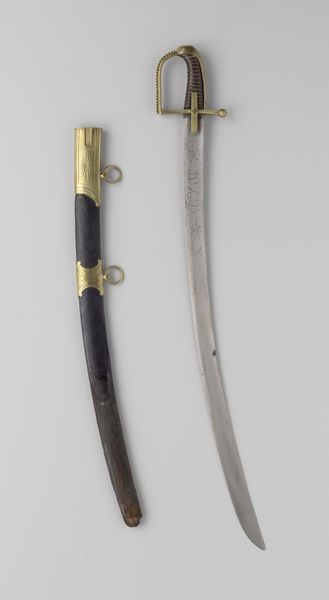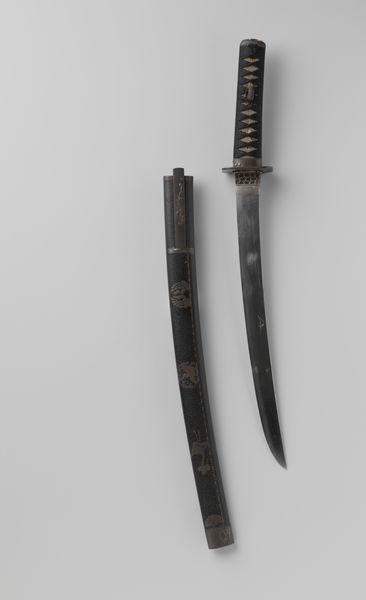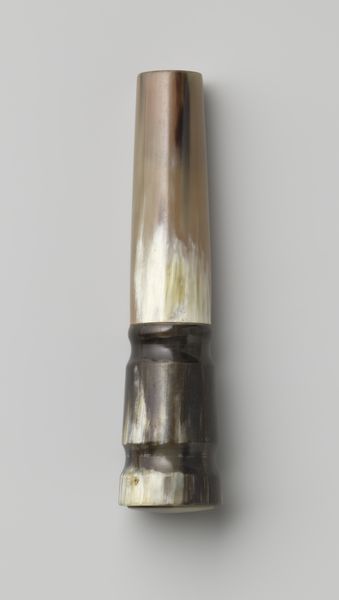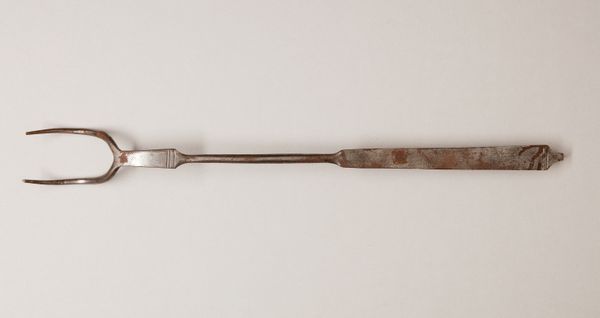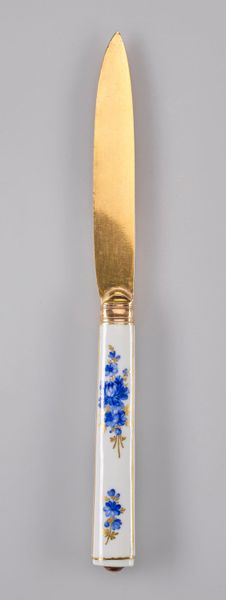
metal, sculpture
#
baroque
#
metal
#
sculpture
#
decorative-art
Dimensions: Length (knife .22): 9 3/8 in. (23.8 cm); Length (fork .23): 9 1/4 in. (23.5 cm)
Copyright: Public Domain
Curator: Here we have a baroque table knife and fork dating from the 17th century, currently held in the Metropolitan Museum of Art's collection. Notice the intricate decorative work employing mixed materials like metal and stone to elevate a humble tool. Editor: They’re surprisingly beautiful. There’s something almost otherworldly about those smoky, translucent handles. They feel very delicate, even though they're everyday objects. Curator: Indeed. Tableware, especially sets like this, were often commissioned by wealthy families as displays of status, designed not just for utility, but as part of elaborate rituals of dining and social display. Editor: And dining, historically, has been a potent space. Who is invited to the table, the kinds of food presented, even the utensils—they all reinforce societal hierarchies, class, gender. Just holding this makes me consider who would have been using them, and who was serving them. Curator: Precisely. The quality of the craftsmanship would reflect the owner's standing. Owning refined objects was part of baroque culture, closely tied with notions of gentility. It dictated behaviors in increasingly refined dining rituals. The fork, by the way, was something relatively new at that time and often viewed as somewhat pretentious. Editor: The handles have a mesmerizing, organic quality, juxtaposed with the cold, hard metal. They introduce a tension between the "natural" and the manufactured. Even today, natural materials signal something special and artisanal. What's the significance of showcasing this rather ordinary piece? Curator: Because understanding our material past allows us to decode social relations and structures. Even mundane items, like this knife and fork, tell silent narratives of social custom. Editor: It also serves as a poignant reminder. While we admire this piece, millions around the globe lack basic access to food. How far, really, have we progressed as a global society? Curator: It is an interesting thought, to think of such basic, often brutal human conditions being elevated through art, beauty, and the aesthetic sensibilities that dominated during the Baroque era. Editor: Definitely. Even simple utensils echo questions of privilege and distribution in our societies then and now.
Comments
No comments
Be the first to comment and join the conversation on the ultimate creative platform.

